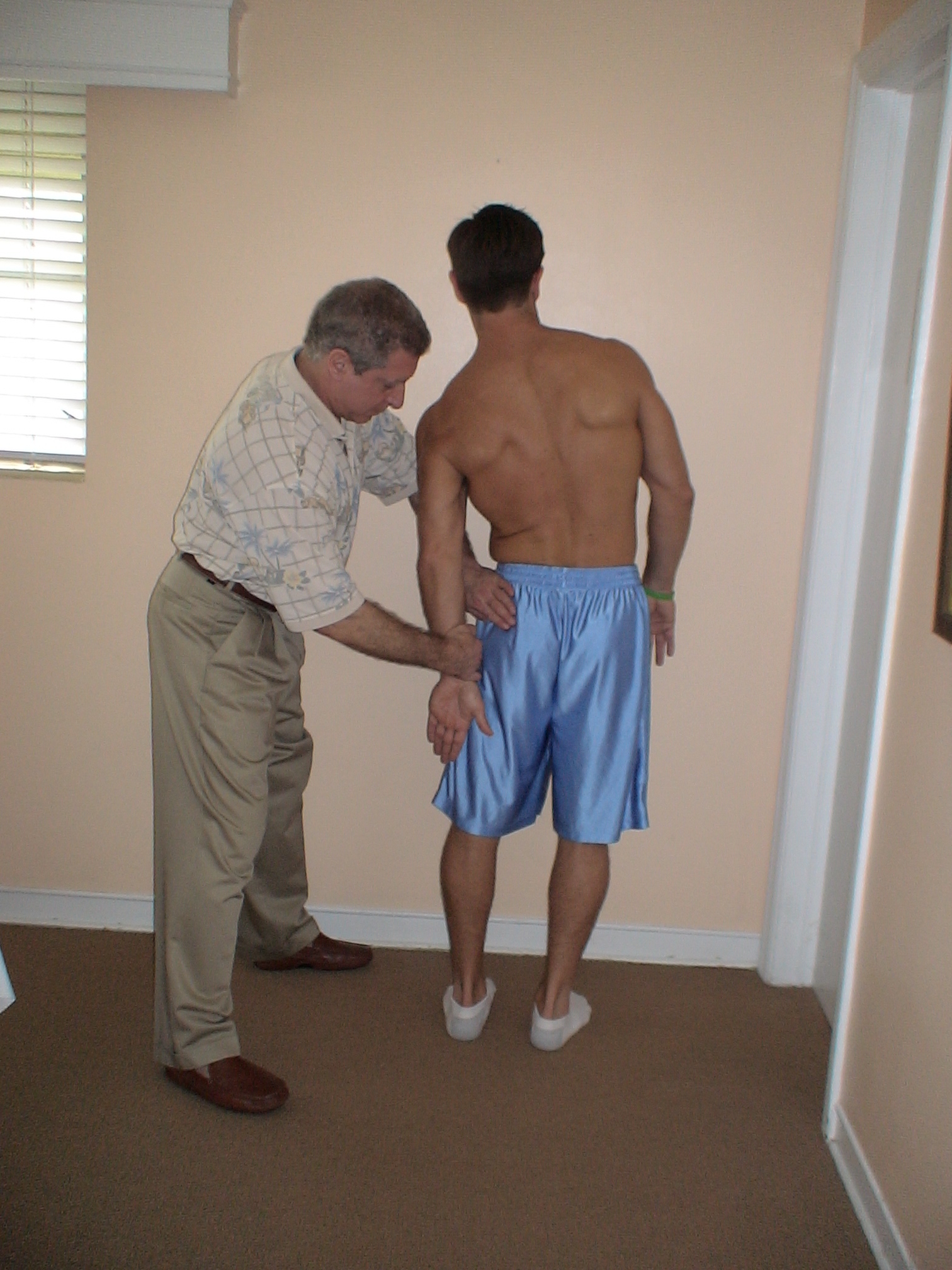Relocators

Having absolutely nothing to do with changing one’s residence, relocators actually help to keep the family at the current address. Gleno-humeral joint integrity is challenged constantly in everyday activities. With the arm at the side, superior capsular tautness plus the tone of supraspinatus and the horizontal fibers of posterior deltoid ( along with capsular and atmospheric pressure) keeps the joint intact. With the arm overhead, the redundant inferior joint capsule becomes taut, and, along with infraspinatus and coracobrachialis tone, the joint is again stable. In the 60 degree to 120 degree range of abduction, the integrity of SITS helps keep coaptation of the head of the humerus in the glenoid.
As anyone who has taken any of my classes or seminars knows only too well, I am a big fan of origin-insertion-action of muscles. “This is how the body works.” Once that is learned, “tricks of the trade” become valuable, understandable and usable tools. One of the tricks that I use (by the way, “tricks” are actually known physiological and anatomical principles, applied) has to do with a false positive test (muscle test, ROM, pain, non-response to exercise, whatever) for the latissimus dorsi. Without going into OIA specifics, let’s just say that lat dorsi starts on the trunk and ends on the arm. In most cases, it is potentially a very strong muscle. Because of its OIA, it can inferiorly translate (subluxate, dislocate) the head of the humerus from the glenoid ... unless this force is offset by the co-contraction of long head of the triceps (LHT). The lat dorsi is a powerful adductor, medial rotator and extensor of the shoulder joint. LHT, along with forearm extension (against resistance), is a weak adductor and extensor. Because of its attachments, it’s co-contraction with lat dorsi activity acts to preserve gleno-humeral integrity. Remember OIA? LHT: Infraglenoid tubercle of scapula - posterior surface of olecranon. With it’s origin on the scapula, it’s contraction will tend to superiorly stabilize the humeral head against the inferior pull of the lat dorsi.
In the same way that the long head of triceps “relocates” the humeral head during lat dorsi activation, coracobrachialis aids in coaptation against the translative forces generated by pectoralis major activity. The force sensors-golgi tendon organs-will, neurologically, allow only the amount of force that is generated by the compromised muscle to be short of injury.
This presentation will explore the preservation of gleno-humeral joint integrity during contraction by Latissimus dorsi and Pectoralis Major, both strong movers of the arm. Muscles with similar function, but different origins, relocate (reposition) the head of the humerus in the glenoid fossa by their co-contraction. The resulting changes in shoulder/arm ROM’s, pre- and -post treatment will be noted.
Coracobrachialis’ effect on neck and shoulder function and LH Triceps’ effect on shoulder/arm function will also be explored.

In this seminar you will learn how to evaluate the need to treat these muscles in order to preserve gleno-humral joint integrity during the strong translative forces generated by the contractions of Pectoralis Major and Latissimus Dorsi.
Please know the Origin, Insertion and Actions of the following muscles:
- Pectoralis Major
- Latissimus Dorsi
- Coracobrachialis
- Triceps Long Head
I am looking forward to sharing this knowledge with you!
Thomas Liberto, LMT, Personal Trainer
For Additional Information or Scheduling:
Thomas Liberto, LMT, Personal Trainer
Lake Worth, FL 33460
Telephone: 561-420-3272
Email: thomas@libertotherapy.com
